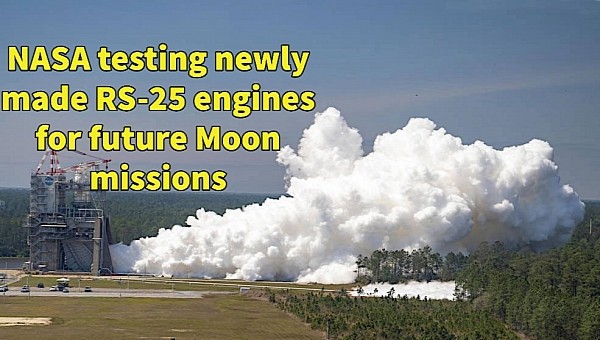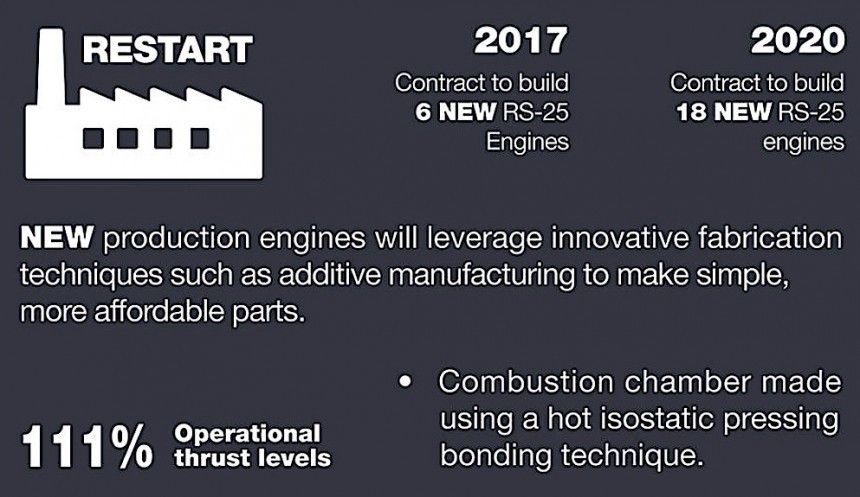Weirdly enough, the most powerful space rocket NASA has ever designed is powered by engines born more than four decades ago: the Space Launch System (SLS) rocket, the backbone of the Artemis Moon exploration program, relies on hardware originally designed for and used by the Space Shuttles.
They call them RS-25, and they are the work of space company Aerojet Rocketdyne. They first pushed a spaceship into space in 1981, when the STS-1 Shuttle mission left for Earth orbit, and they were so successful that they are still in use today.
Before being strapped to the SLS to power Artemis, RS-25s were used for a total of 135 space missions. Because these missions were spread over three decades, the engines underwent major upgrades on five separate occasions.
After the Space Shuttles were retired in 2011, NASA was left with a few more RS-25 engines in stock. It started adapting them for use in the SLS in 2015, and we’ve seen the results of that work as the Artemis I mission lifted off and headed for the Moon at the end of last year.
The American space agency is now gearing up for Artemis II and III, which, together with the still-to-be-announced Artemis IV, will use RS-25 engines from the current stock. Since the SLS is not a reusable contraption, and each needs four such pieces of hardware to run, the stock of RS-25s (counting 16 engines back in 2015) should probably be depleted by the end of this decade.
But the Artemis program will have to go on, seeing how this time the Moon is primed for colonization, and not only visitation. So we’ll witness the birth of further SLS rockets, and they will all be powered by… RS-25 engines.
For the rockets of the Artemis V and beyond missions, new ones will have to be made, and production lines have already started rolling. Because fresh manufacturing processes are used for the batch (including new materials, a new bonding process for the combustion chamber, 3D printing, and structured light scanning) hot fire tests of the new hardware have already begun.
When the SLS is climbing to the heavens, the powerplants are required to generate in excess of 2 million pounds of thrust for about eight minutes, and NASA needs to know if the new techniques for making them work. That’s why it plans a series of 12 hot fire tests to be conducted at the Stennis Space Center in Mississippi.
The 12 runs will amount to a total of 6,150 seconds of hot fire time, with the test engine burning at an average of 111% percent capacity. So far, only four runs have been performed, amounting to a total of 2,220 seconds of burn time, with the rest of the tests to take place by the end of June. A second engine will join the test benches after that, with work on that planned to conclude in fall 2023.
Before being strapped to the SLS to power Artemis, RS-25s were used for a total of 135 space missions. Because these missions were spread over three decades, the engines underwent major upgrades on five separate occasions.
After the Space Shuttles were retired in 2011, NASA was left with a few more RS-25 engines in stock. It started adapting them for use in the SLS in 2015, and we’ve seen the results of that work as the Artemis I mission lifted off and headed for the Moon at the end of last year.
The American space agency is now gearing up for Artemis II and III, which, together with the still-to-be-announced Artemis IV, will use RS-25 engines from the current stock. Since the SLS is not a reusable contraption, and each needs four such pieces of hardware to run, the stock of RS-25s (counting 16 engines back in 2015) should probably be depleted by the end of this decade.
For the rockets of the Artemis V and beyond missions, new ones will have to be made, and production lines have already started rolling. Because fresh manufacturing processes are used for the batch (including new materials, a new bonding process for the combustion chamber, 3D printing, and structured light scanning) hot fire tests of the new hardware have already begun.
When the SLS is climbing to the heavens, the powerplants are required to generate in excess of 2 million pounds of thrust for about eight minutes, and NASA needs to know if the new techniques for making them work. That’s why it plans a series of 12 hot fire tests to be conducted at the Stennis Space Center in Mississippi.
The 12 runs will amount to a total of 6,150 seconds of hot fire time, with the test engine burning at an average of 111% percent capacity. So far, only four runs have been performed, amounting to a total of 2,220 seconds of burn time, with the rest of the tests to take place by the end of June. A second engine will join the test benches after that, with work on that planned to conclude in fall 2023.












